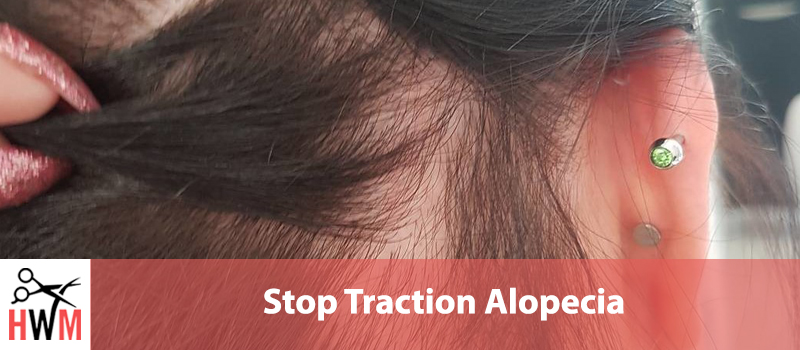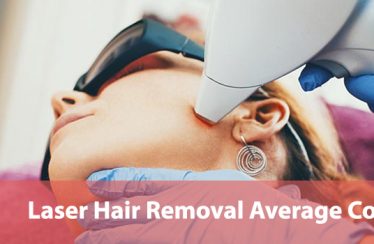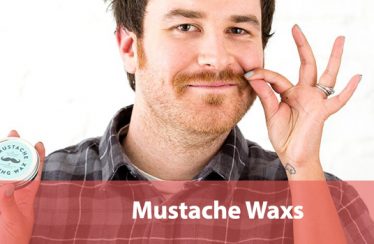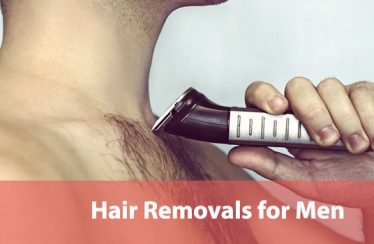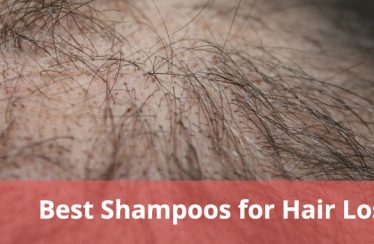Any form of hair loss is frustrating and embarrassing, but traction alopecia can be especially upsetting since it’s recognizable but can affect any part of your head, especially your hairline. Once you have traction alopecia it makes wearing almost any hairstyle more difficult.
Traction alopecia makes having clean edges a struggle and can make you reach for extensions and wigs to hide the damage. All the while, those extensions and wigs, and other tight hairstyling choices are making the traction alopecia worse.
Even worse, for many of us, the very hairstyles and chemicals that cause traction alopecia in the first place are an important part of maintaining the image and professionalism we’re expected to have at our jobs.
Grooming expectations add even more pressure to deal with the problem with quick-fix solutions that make the underlying issue worse.
We’ve designed this guide with those vicious cycles in mind. Our research is aimed at empowering you to identify traction alopecia in the early stages. We also discuss treatment options and how you can take control of the situation and grow your hair back.
- What is Traction Alopecia?
- Warning Signs of Traction Alopecia
- How You Can Effectively Prevent Traction Alopecia
- How to Re-Grow Hair After Traction Alopecia
What is Traction Alopecia?
Before we get started, it’s important to take some time to explain traction alopecia. The more information you have the more effective you can be fighting back against this form of hair loss.
The most basic definition of traction alopecia is hair loss caused by repetitive or continuous stress on hair and hair follicles resulting in skin and follicle damage.
Fortunately, traction alopecia is fully reversible when it’s caught early. However, the longer you allow traction alopecia to progress the more likely you are to develop scar tissue that prevents successful treatment and re-growth of your hair.
One of the most common causes of traction alopecia is consistently wearing the same or highly similar tight hairstyles. High-risk hairstyles range from tight ponytails to tight braids, cornrows, and dreadlocks, to tight buns.
Damage from chemical relaxers, high-heat styling, and any other styling method that causes burning, itching, or pain, can also lead to traction alopecia. The risk is even greater if you combine these styling techniques with high-risk hairstyles.
Usually, this form of hair loss still leaves small thin “baby hairs” growing in the damaged area since those hairs are too short and fine to have suffered the same stress as the longer hair in that area.
While your hairline is most vulnerable to hair loss from traction alopecia, it can affect any part of your hair. It’s especially likely along the edges of harsh part lines or other edges.
Warning Signs of Traction Alopecia
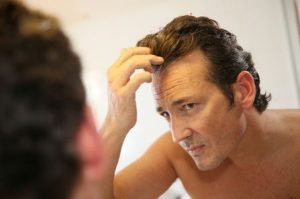
There are plenty of warning signs of traction alopecia, but they can be fairly subtle. Here are some of the things you should keep an eye out for, especially if you do use potentially damaging styling products or prefer to tear tight hairstyles.
Your Hair Part is Getting Wider
This is the most common sign people notice as traction alopecia starts to progress. As your hair thins, especially along the highest tension areas on your scalp, the parts between different sections of hair will get wider.
You’re more likely to see this early warning sign if you wear a lot of tight hairstyles like tight braids, cornrows, or dreadlocks. Part of the reason it’s easier to see with those hairstyles is that there are more edges and parts you can see. But it also has to do with the fact that those hairstyles are more likely to cause tension damage.
You might also notice that your part is wider right along your hairline than it is through the rest of your hair, another sign that traction damage is occurring right along the edges of your hair.
You Notice More Hair Falling Out Between Hairstyles
This is something you might catch if you do your hair, or your hairstylist might bring it up at an appointment.
It’s normal for you to lose 50-100 hairs a day. That’s also about the replacement level for hair, so as 1 strand of hair falls out another strand of hair is starting to grow in.
When you have your hair up for an extended period a lot of that loose hair stays in with your other hair, so it’s normal to have more fall out as you take out a braided or other protective hairstyle.
But if you or your hairstylist suddenly start noticing more hair falling out between styles than normal, that can be an early sign of traction alopecia.
You Start Seeing Small White Bumps in Your Hair or Along Your Hairline
One or two little bumps of irritated skin through your hair is normal, but it can be concerning if more of those bumps start appearing. Especially if the bumps are appearing mostly in areas of high stress and tension.
The bumps can be several different things, from irritated swollen hair follicles to zits or mild ingrown hairs, but all of them are indications that your skin is damaged and irritated.
Even if you aren’t noticing other signs of hair thinning or irritation it’s a good idea to talk to your stylist, a doctor, or a dermatologist about possible causes and what you can do to soothe the irritation and heal your scalp.
You Hair Starts to Change Texture
Some people can feel the changes occurring in their scalp through their hair as well. This possible warning sign is less common and is less noticeable if you use hair relaxers or other chemicals that alter the texture of your hair.
But if you notice that your hair is getting thinner, start breaking more easily, or if your hair’s wave or curl starts to noticeably change before you apply styling products, it possible that your hair follicles are being damaged or irritated.
Irritated hair follicles are at the root of the problem, so this can be one of the earliest signs of traction alopecia, particularly if your hair seems to only be changing texture in some areas and patches and not others.
How You Can Effectively Prevent Traction Alopecia
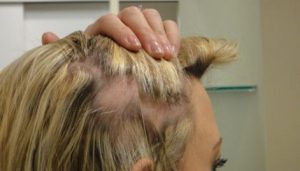
Whether you are in the earliest stages or have progressed quite a bit, traction alopecia is one of the easiest forms of hair loss to treat.
Like other forms of hair loss, however, it is easiest to treat if you catch the problem early. The longer you have this form of hair loss the more likely you’ll also have scar tissue that can prevent your hair from growing back or can change the texture and color of the re-grown hair.
Prevention is a better option than treatment, although we’ll talk about treatment options in the next section. Here are some steps you can take to help prevent traction alopecia from developing in the first place.
Rock Your Natural Hair
One of the biggest things you can do to prevent traction alopecia is to rock your natural hair without relaxers or other chemical styling aids that cause damage and irritation over time.
It is estimated that as much as 1/3rd of all African-American women have some degree of traction alopecia, and a major culprit is the combination of relaxers and other potentially damaging hairstyles and styling techniques.
The outlook isn’t any better for men, although the statistics on traction alopecia aren’t as readily available for us to provide exact numbers.
We do understand that it can be difficult to avoid those products entirely, especially if you work in the corporate world or are in front of a camera or the performing arts.
But, as culture in the United States is changing it’s becoming easier to wear your natural hair, and it’ll keep your hair healthier if you do.
Avoid Heat Styling
Styling your hair with the hot setting on a hairdryer or using presses and curling irons to tame your mane causes progressive damage over time.
Even with heat-protective products that damage still adds up. The irritation goes deeper than just your hair shaft, affecting the root and sometimes the hair follicle as well.
Especially if you also use a relaxing product, your hair and scalp are sensitive to heat damage from styling tools.
So, save the heat styling for special occasions and keep your hairdryer on a warm or cool setting the rest of the time.
Wear Your Hair Loose or in a Loose Style
Instead of wearing your hair in tight styles every day or every week, try wearing it loose for a few days or weeks between tight styles.
By wearing your hair loose for a while between long-lasting tight hairstyles you’re giving your scalp and hair follicles a break. Loose hair is less stressful for the follicle and allows your hair to move and your scalp to breathe normally.
Just wearing your hair loose doesn’t minimize the damage done by too-tight or too-restrictive hairstyles, but it does give your scalp time to recover and heal naturally.
If you’re someone who does your hair every day try using a looser hairstyle like a low-ponytail instead of a high-ponytail. Or you can use a thick braided style instead of a tighter thin braid style.
As a general rule of thumb any hairstyle that hurts to have done, like while your stylist is pulling to form the braid, is too tight and causing damage. Pain equals damage.
The same goes for hairstyles that make your scalp itch, or that you feel the need to use a hair or scalp tapping method to reduce your discomfort. Any hairstyle that makes your scalp itchy, gives you headaches, or makes your scalp feel too tight is also likely causing damage.
If you experience any of those sensations, especially if your hair is being done by a stylist, you should stop and start over with a looser style. Most stylists will understand and be happy to re-do a braid or twist that is too tight.
Opt for Fabric Hair Ties Instead of Rubber or Elastic Hair Ties
Rubber hair ties, even the thread wrapped kind, are harder on your hair than fabric ties. Fabric ties are better at distributing the stress and pressure of the hair tie through a larger section of your hair, instead of focusing all that pressure on one small area of hair.
That broader distribution of pressure helps to prevent two different types of damage to your hair.
The first type of damage is right at the hair tie, where all the pressure weakens the hair shaft after repetitive use of the hair tie.
That pressure can also create lines of tension in your hair tracing back to the root of the hair. The tension from the hair tie isn’t evenly distributed, so some sections of your hair will be pulled more than others.
That extra tension can cause damage to both the root of each strand of hair, which can result in it breaking or growing thinner and weaker, or even falling out, as well as causing damage to the follicle.
If the follicle is damaged it may produce a weaker hair strand when it starts growing again or take more time to start growing hair again at all while the damage heals.
How to Re-Grow Hair After Traction Alopecia
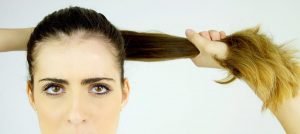
If you already have traction alopecia or suspect that you are in the beginning stages but haven’t been diagnosed, you’re probably wondering what you can do to reverse the damage and restore your hair.
We’ve already mentioned that traction alopecia is almost always at least partially reversible, and some people can recover entirely if you’ve caught the problem early enough.
Of course, if you suspect that you have traction alopecia but haven’t been diagnosed, a good first step is to make an appointment with a dermatologist so that you can have your case evaluated and get advice specific to you.
Avoid High-Risk Hairstyles – At Least For Now
This step doesn’t have to be permanent, but until your hair and scalp has begun to recover you should avoid tight high-risk hairstyles.
Talk with your stylist or dermatologist about hairstyle options that will be fashionable and professional without risking your recovery.
Just like giving you hair breaks, that we talked about in the previous section of this article, this step is to give you a chance to let your head and hair recover and start growing back.
The biggest difference between this step and the preventative measures you can take to prevent traction alopecia from developing in the first place is how long you have to maintain the break.
Once you’re treating traction alopecia instead of preventing it there is damage that has to be allowed to heal, and your scalp will be more sensitive to further damage if you go right back to the same hairstyles and styling products/tools.
It takes longer to heal the level of damage that causes hair loss than to prevent hair loss from happening, so you should plan on avoiding high-risk hairstyles for a few months at least. Once your hair has recovered you should let your hairstylist know that you’ve had traction alopecia before so that you can work with them to pick a hairstyle that will reduce the change of hair loss coming back.
Stop Using Relaxers
If you’ve been using chemical relaxers for your hair, it’s a good idea to stop using them at least until your natural hair is growing back in the damaged areas.
Relaxers are hard on your scalp, so continuing to use them will hamper your body’s ability to heal and start the process of growing your hair again. If you need to straighten and control your hair you can ask a stylist about other options.
Many people find it hard to work with hair that has been treated with a relaxer at the end and is growing in natural near your scalp. You may want to consider letting it grow out a little and then cutting off the relaxed portion.
Shortening your hair, especially if it is very long now, can also help your hair follicles recover since the extra weight of your hair isn’t putting stress on your scalp.
If you do need to continue using relaxers, try and space out the time between treatments so that your hair and scalp have more time to recover.
You should also try to avoid heat styling tools entirely for 1-2 weeks after getting a relaxer treatment, and limit them to special occasions even after that.
Change Hair Style Every Few Weeks
Even if you can and are avoiding a high-risk hairstyle (and we know that that isn’t possible for everyone) you should still change your hairstyle more often than you would with healthy hair and a healthy scalp.
Changing your hairstyle, even if it’s just a matter of changing how you wear your hair from day to day, or as drastic as changing the pattern of your braids or the type of extensions you use, changes where the points of highest stress are. Distributing that stress throughout your scalp instead of hitting the same spots all the time helps mitigate the damage any one area is exposed to.
Even if your hairstyle is still causing damage, doing this will help other interventions and steps you can take to be more effective.
Use Gentler Hair Accessories and Extensions
By gentler hair accessories and extensions, we mean choosing options that are minimally damaging, or actively protective in addition to offering styling options that might not otherwise available.
For extensions, you should use a sewn-in set of extensions or a sewn-in weave rather than the glued variety. Glue can irritate your skin and can lead to your hair strand being pulled in odd directions right next to the root.
You should also consider using a satin pillowcase instead of a wool or cotton one since the satin also protects your hair.
The weave of the satin is less lightly to tangle your hair. It also is a fine enough weave, in general, to prevent your hair from going into the weave of the fabric and breaking or being pulled from your scalp overnight.
Another option would be using cloth headbands or dew rags to hold your hair out of your face instead of a hair tie or scrunchie if those are go-to items for you.
Use a Hair Growth Treatment
Another option that has been shown to have significant results for other types of alopecia, and has been recommended by dermatologists for traction alopecia, is Rogaine.
Specifically, the stronger 5% formulation has been clinically proven to help restore hair growth at the follicle level, bringing follicles that do not actively grow hair back into an active grown, anagen, phase.
Using Rogaine can help you restore more hair to areas that have had significant hair loss and help bring your hairline back to where it was before you started developing traction alopecia.
That said, even with the aid of Rogaine you may not be able to fully restore your hair if your alopecia has gotten severe.
Hair Transplants
This is a more invasive option, and not something most people with traction alopecia will ever need to consider. Before you start thinking about getting hair transplants, remember that it takes an average of 3 months for your hair to start coming back after any kind of hair loss.
It may take as much as 4-6 months for your hair to show signs of recovering if the damage was more severe, or more of your scalp was affected.
However, if your hair isn’t recovering after several months, or your dermatologist thinks that the alopecia is severe enough to need it, you may want to consider getting hair transplants.
A hair transplant relocates hair follicles from elsewhere on your head, usually the very back of your scalp, into the area of hair loss. The hair that is transplanted initially does fall out, but the hair follicles will start growing new hair into the area a few weeks after the original hairs fall.
There are two methods for this, one which involves shaving the back of your head to remove individual follicles to transplant, and another where several inches of skin is removed to extract the follicles, but from an area easily covered by your remaining hair.
Both procedures have fast recovery times, although both will likely leave your scalp tender for several days.
Some doctors recommend also using Rogaine to aid in hair growth after a transplant.
Conclusion
Hopefully, if you’ve come with us this far you feel more prepared to prevent and to deal with the effects of traction alopecia, and less like you’re not in control of the situation.
Traction alopecia is one of the most preventable and most treatable forms of alopecia hair loss. You can get your hair back, it’s just a matter of making some routine adjustments.
